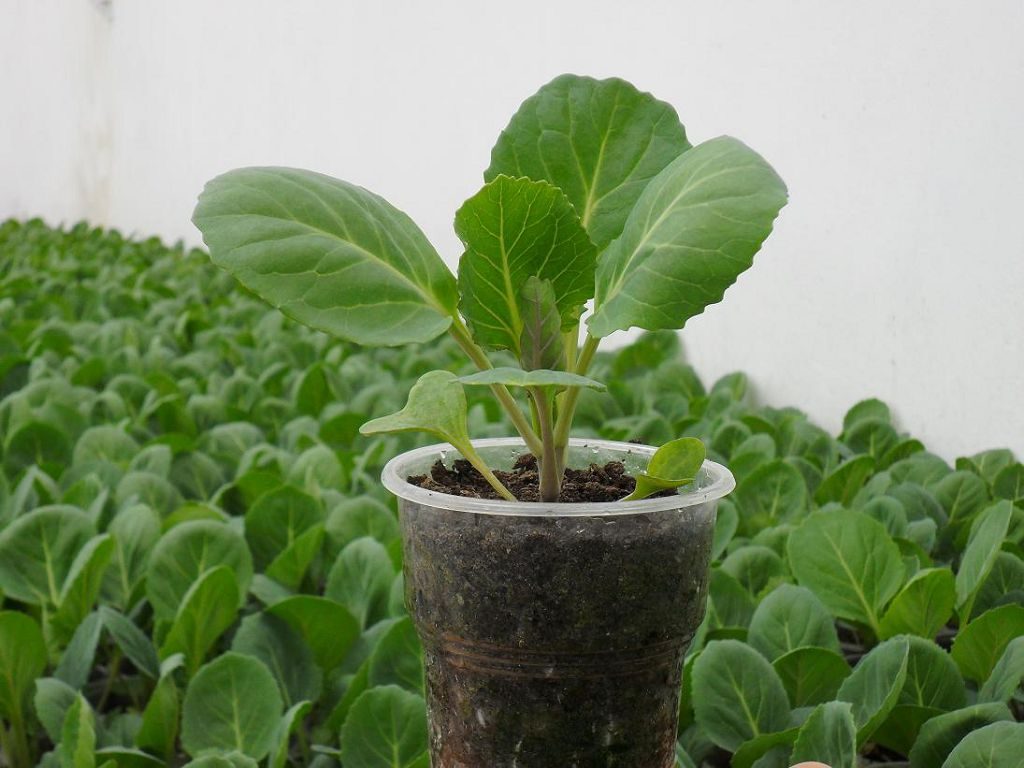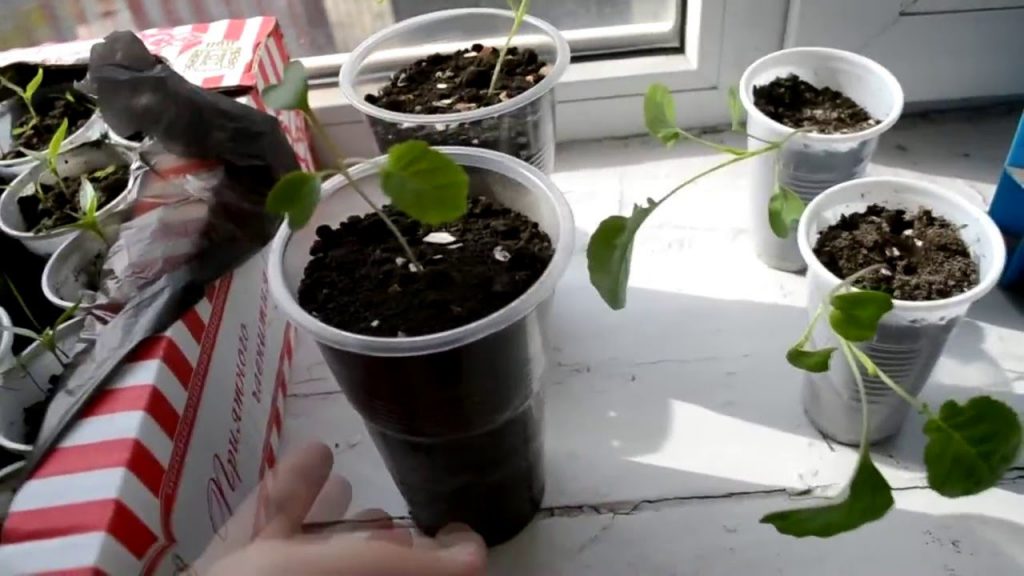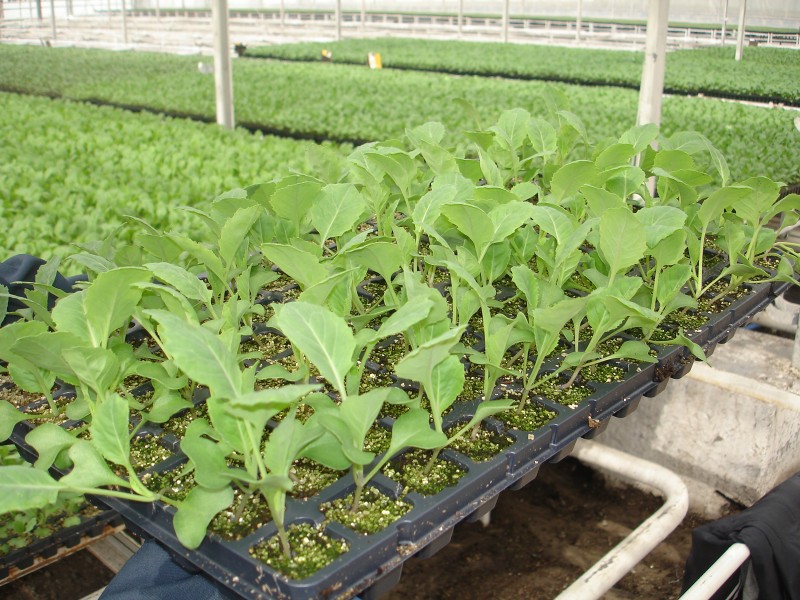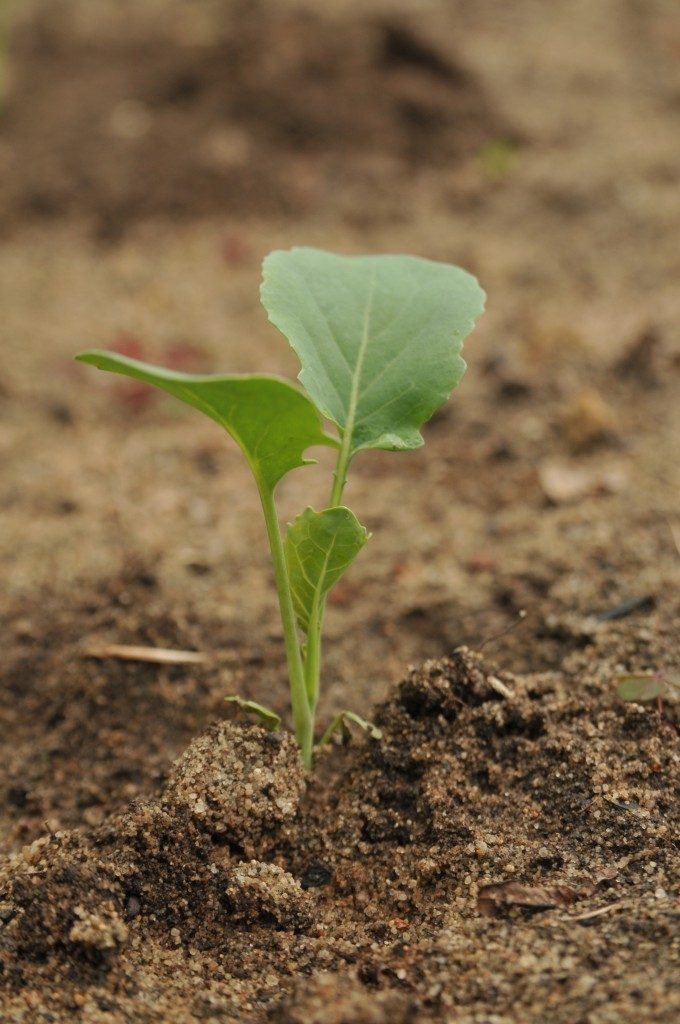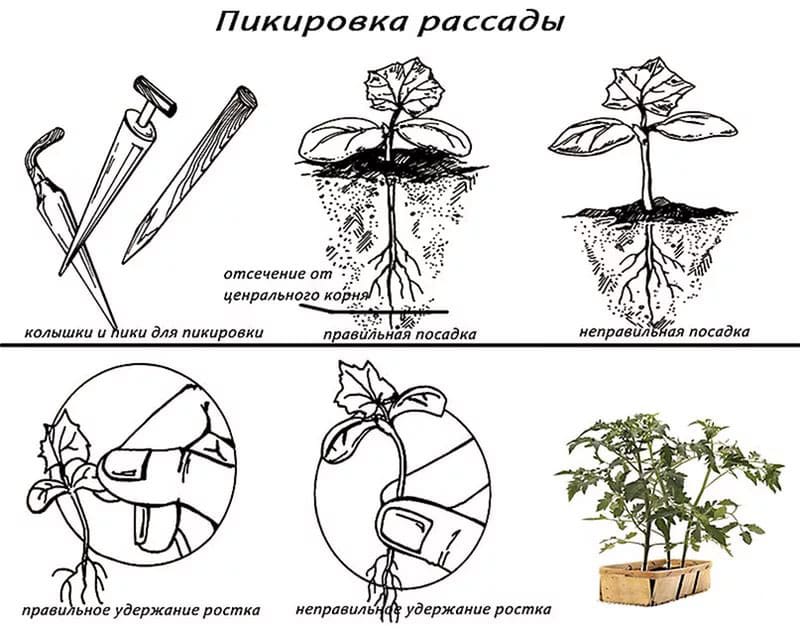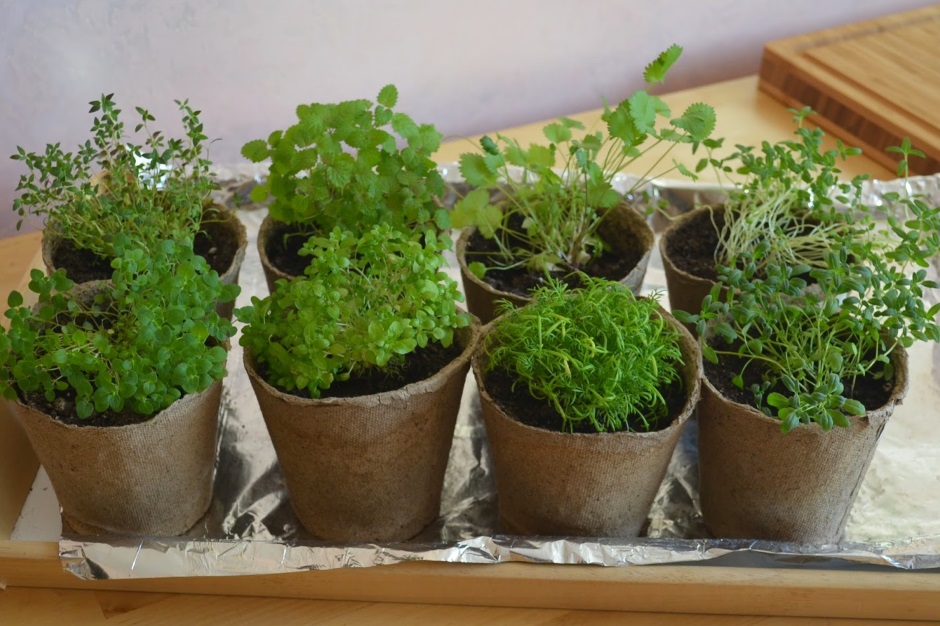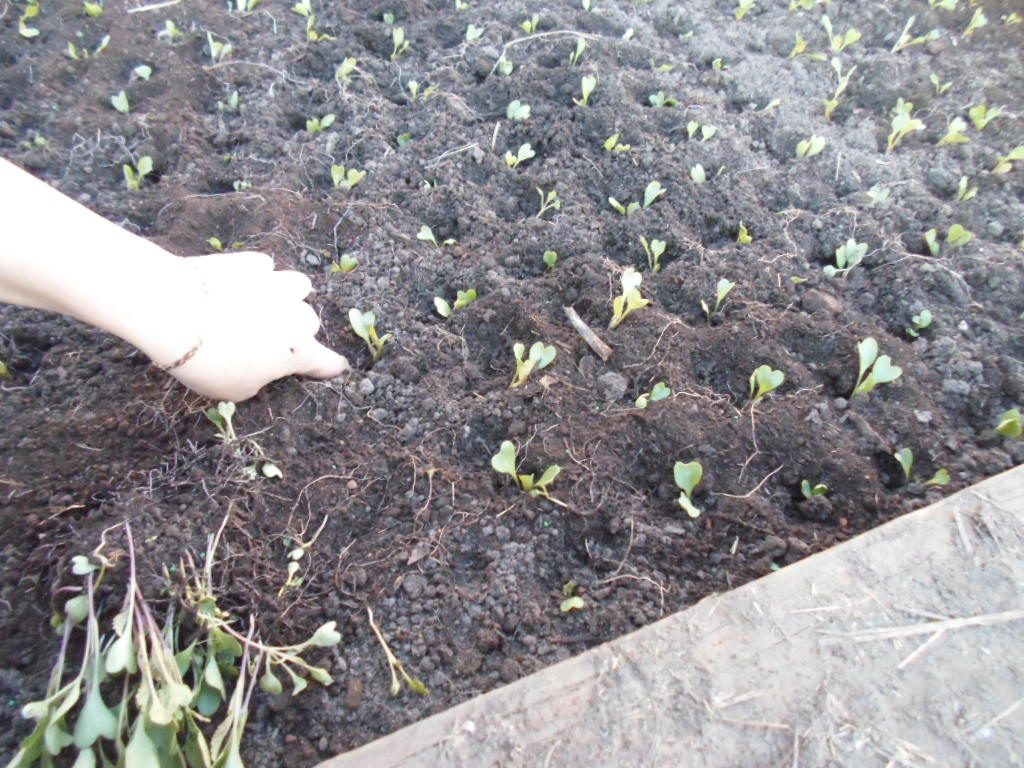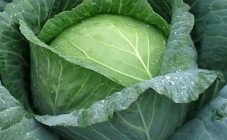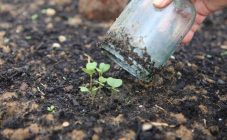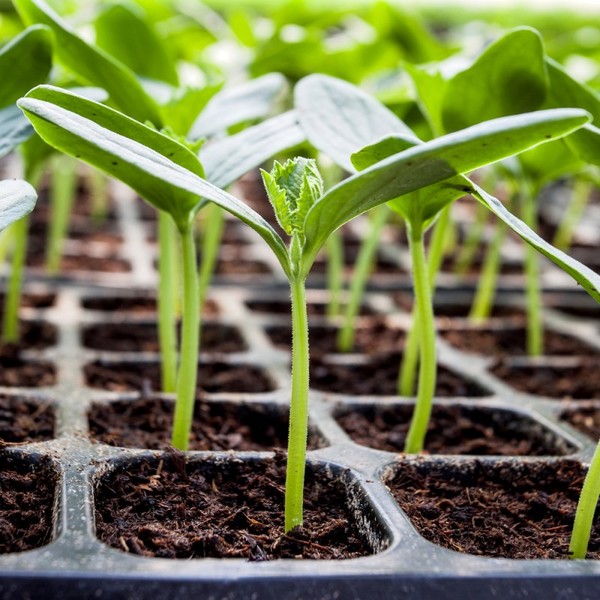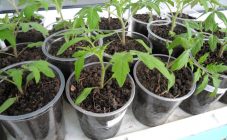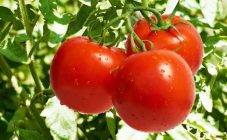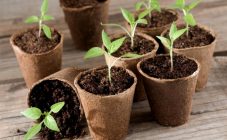Content:
About homemade cabbage seedlings
Growing cabbage in the climatic conditions of the middle lane is a rather difficult task. This culture is demanding and even capricious for most Russian regions, as it is thermophilic. In this regard, sowing seeds in open ground is not possible. You must start growing cabbage with seedlings. The time for sowing seeds differs depending on the variety:
- Early varieties ripen in 2 months, so the sowing of seeds falls on the last days of April - early May;
- Late cabbage grows for about 4 months, so growing seedlings begins in February - March.
Favorable conditions for the transfer of adult cabbage seedlings to open ground come at the end of May.
Seedling growing scheme:
- Sowing seeds in nutritious moist soil;
- Covering the container with glass or cling film to create a greenhouse effect. Germination temperature is from + 20˚C and above, therefore containers are placed on a warm windowsill;
- After the emergence of seedlings, the containers are freed from the shelter and left on the sunny side. In bright sunlight, you need to carefully monitor soil moisture.
What is a pick (dive)
Pickling cabbage seedlings is an event to transfer young shoots to a larger container in order to increase the feeding area. This process does not always mean transferring to a permanent place (garden or greenhouse). It is possible that the cabbage was sown in individual small capsules (for example, cells in boxes of chocolates) or in bulk in a common container, and as the sprouts develop, it is transferred into large containers (for example, plastic glasses). When seeds are planted in the soil, they only need to maintain moisture and good air exchange. The small area allows you to get it to the fullest. The appearance of leaves means that the plant begins to actively develop. A root system is formed, which absorbs nutrients from the soil. Therefore, the volume of the soil must be larger.
Is it necessary to dive cabbage
Diving cabbage solves a number of problems:
- Thinning of thickened crops;
- Renewal of nutrient-rich seedling soil;
- Natural selection of sick and weak shoots;
- Improving the conditions for the development of seedlings by increasing the volume of the earthen coma.
The root system of cabbage develops quickly enough, filling the space. In a small space, the roots begin to tangle and crawl out of the container. At this point, the plant desperately needs additional nutrition, so picking cabbage at home is a necessary event. Some gardeners are trying to simplify the task and immediately sow cabbage in large containers, so as not to deal with planting in the future. This decision is incorrect, since an excess of substrate often leads to overflow of seedlings, which, in turn, provokes the spread of fungal infection.
When to dive cabbage
There are no strict guidelines for when to dive after sprouting cabbage. Previously, summer residents were guided by the lunar calendar from the moment of sowing, going through all phases of growth and development, until harvesting. In 2018, agronomists recommend taking into account the approximate dates, but taking the appearance of the plant as a basis.
When to dive cabbage seedlings
| Variety | Approximate dates from the moment of emergence |
|---|---|
| White-headed | 1 - 2 weeks |
| Redhead | |
| Savoy | |
| Kohlrabi | 1.5 - 3 weeks |
| Broccoli | |
| Colored |
When the sowing date is fixed, you can start monitoring the development of the seeds. The first to appear are the leaves from the cotyledons, they are not real, but only indicate the germination of seeds. At this time, the seedling is still very delicate and weak, so it may not withstand a dive. You need to wait until 2 true leaves appear on the seedlings. At this point, the plant is more or less strong and ready for transfer. It is also not worth delaying this procedure, since overgrown seedlings in a new place develop more slowly, since they need more time to adapt.
A variety of cabbage - Peking cabbage, does not require picking, as it does not tolerate movement well. It is recommended to initially sow the seeds in peat pots, and when the seedlings are old enough, they are transferred to a permanent place along with the pot. This is the safest way to grow Peking cabbage.
How to dive cabbage
You need to plant cabbage very carefully and carefully. All roots need to be straightened and set in a vertical direction to the depth of the container. With a correct pick, there is one sprout per pot. If the planting capacity is in short supply, then double and even triple picking is allowed, followed by seating in separate holes.
Before you dive cabbage, you need to study the step-by-step instructions:
- Before removing the seedlings from the container, the soil must be moistened to reduce resistance. This will reduce the number of dangling shoots. In addition, the moist soil remains a lump on the roots, which reduces transplant stress;
- To transfer a plant to a new place, you need to prepare a special tool: a spatula, a spatula, or any available metal or wood tool. The tool allows you to pry the cabbage along with the earthy clod without damaging the roots;
- In the planting container, it is necessary to make a depression in the soil, with a diameter and depth slightly larger than the size of an earthen coma on the transplanted seedlings. It is necessary to deepen the plant at the level of the lower cotyledons;
- After the plant is installed in a new place, the hole must be covered with earth and lightly tamped with your finger. From above, you need to pour soil again to the level of the cotyledons. All manipulations must be done very carefully so as not to touch the seedling with your hands.
The pick is carried out in two ways:
- Transfer. 2 hours before the start of work, the soil is well watered, this will allow you to easily extract the sprout from the ground without damaging the roots. The method is used in the event that it is necessary to pinch the main root for further branching of the root system. After the pick, you can test for planting density: if you pull the leaves up, the seedling should remain in the ground. If it is easily pulled out, then the soil does not adhere to the plant, and it will not take root well;
- Transfer. The advantage of this method is that the risk of root injury is minimized. In addition, cabbage does not need additional time to adapt, in a new place it immediately begins to grow. When transshipping, the seedling is removed together with the earthen clod and installed in a new place.
Basic dive methods
Snail
The technique was developed back in the 60s of the XX century and is suitable for most cultures. Its essence lies in the uniform laying of seeds on natural or synthetic material, sprinkled with a thin layer of soil.Then this blank is tightly curled and visually resembles a snail. This technology has several advantages:
- Saves space by 10-15 times;
- Seeds sprout quickly and amicably, as this type of twisting creates a favorable thermal effect;
- Isolation of the roots allows them to develop freely and not intertwine with each other;
- Convenience of watering. The snail is placed in a shallow container, from where moisture is evenly taken. This method helps to avoid overflow;
- Saving soil;
- Snail seedlings can be transferred directly into open ground.
Among the negative sides, there is a stretching of the stems in low light. This situation occurs when the seeds are laid too densely, so this problem can be easily solved by more rare sowing or supplemental lighting with phyto lamps.
Diaper
Dense polyethylene is used as a diaper, which is cut into rectangular pieces measuring 15 cm * 20 cm. The sheet is laid out on a flat surface and 1 tbsp is placed in one of the corners. moistened soil mixture. A seedling is laid on top so that the border of the cotyledon is outside the polyethylene, and another 1 tbsp is sprinkled on it. soil. The free edge of the piece is bent so that it covers the ground. The resulting structure must be rolled up so that you get a roll with a seedling in the center. You can fix it with tape, elastic band or plaster. After all the seedlings are rolled up in diapers, they are tightly set in a wide and shallow container. Cultivation takes place in the usual way - on a windowsill with periodic watering.
When 2-3 more leaves grow on the seedlings, the diaper needs to be unfolded and added another spoonful of earth.
The method is convenient in that at the time of transferring the seedlings to the garden, you just need to remove the polyethylene and place the cabbage together with the earthen lump in the planting hole. It turns out that the root system is practically not affected, which means that it will be easier for the plant to take root in a new place.
Peat cups
Peat containers are widely used at large agricultural enterprises that grow seedlings and plants for sale. Over time, gardeners appreciated this material and began to use it on their plots. The main advantage of these containers is that the plant does not need to be disturbed at all, it grows in a pot and in it is immersed in a permanent place in the open ground. When growing seedlings, the pots are a container, and when they get into the ground, they decompose and become an organic fertilizer for cabbage. The diving process is similar to transferring to a plastic container.
Plastic cups
The optimal container diameter is 5 cm. The bottom must necessarily contain holes so that air can easily pass through and excess water does not accumulate. Otherwise, the roots may rot, or the fungus will begin to multiply. The inconvenience of this method is that it is problematic to remove the cabbage from the container along with the lump. Root breakage often occurs. In this regard, for reinsurance, 2 sprouts are planted in 1 glass. They began to replace hard plastic cups with bags, since they can be cut and the seedling can be easily reached.
Cauliflower dive
The transfer process of cauliflower is slightly different from other types. In this regard, summer residents are interested in the question of when and how to pick cauliflower so that it takes root in a new place.
First, the dive time is shifted a week later. Secondly, soil preparation is different. In a conventional pick, it is enough to use nutritious purchased soil or treated soil from a summer cottage. Soil for cauliflower must first be fertilized. An aqueous solution enriched with 10 g of ammonium nitrate, 25 g of lime, 12 g of superphosphate and 5 g of potassium sulfate is added to 10 liters of earth. Further, the transplantation process takes place as usual.
Pick in the phase of cotyledons
Most often, cabbage is dived in the phase of 1 or 2 true leaves, but earlier transplantation is also allowed if in the cotyledon phase the plants are strong and visually strong enough. The advantage of early picking is that the plant adapts very quickly and begins to actively develop. It is necessary to choose specimens suitable for transfer very carefully, since weak shoots are easily injured and do not recover in a new place.
Care of young shoots
After transplanting, the seedlings are stressed, so they need to provide comfortable conditions and care:
- The temperature of keeping seedlings in a new place is + 10˚C… + 15˚C;
- Shading from direct sunlight;
- Maintaining the soil in a moist state;
- With a lack of light, you need to organize additional lighting;
- Weeds that appear must be removed;
- 10 days before disembarking in the garden, the seedlings need to be hardened daily, if the weather permits, then in recent days you can leave the seedlings outside around the clock. This is only permissible if the temperature does not drop below +10 ˚C at night;
- Mineral dressing after picking allows young shoots to grow more actively.
In general, the picking procedure is not included in the list of basic agricultural techniques. It is considered a supplementary activity for growing seedlings. For a southern climate, it is permissible to skip this stage, since the temperature regime allows cabbage to be planted directly into the ground. In the middle lane and in the north of Russia, it is impossible to get a rich harvest of cabbage without preliminary cultivation of seedlings. Therefore, it is necessary to transfer healthy and strong seedlings into open ground, which will quickly take up and grow.
